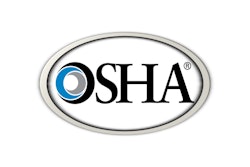When it comes to product recalls and the regulations that surround them, change often comes slowly. But 2018 will bring several new trends that will impact how food manufacturers plan for and, if needed, manage a product recall.
Some trends will address improved food traceability as the food supply chain becomes increasingly global. Others will target better mitigation of undeclared allergens and foreign material in food production. But perhaps the most important trends of 2018 will address new ways to increase consumer awareness and response levels.
Consumer engagement continues to be the weakest link when it comes to successful food recalls, particularly among millennials — who are arguably the food industry’s most important consumer segment. A recent survey of more than 1,000 Americans found that millennials are the least likely demographic to comply with recall notices for food and other products, largely because of the unique communication challenges this age group poses. That’s why the most critical trends for 2018 will focus on communication — particularly on how to make recall compliance easier and more relevant to digitally-minded generations. These key trends include:
New electronic alerts — In 2017, the U.S. Department of Agriculture (USDA) integrated food recall information into its FoodKeeper app. And the USDA isn’t alone. Certain apps are dedicated exclusively to providing recall alerts. And some retailers are incorporating recall information into their own apps and promoting the feature as a public service.
As consumers increasingly move away from desktop internet in favor of mobile devices, this trend will likely continue. But with all the other mobile notifications from social media posts, task reminders, fitness tracking and more, cutting through the constant noise will remain a challenge.
Customized recall information — While recall notifications from apps are a step in the right direction, consumers are increasingly seeking out personalized information regarding their particular interests and needs, whether it’s news about a favorite sports team, a hyperlocal weather forecast or tailored travel alerts. Recall notifications will likely move in that direction, too.
For example, rather than receive as-they-happen or periodic updates on all food recalls, a consumer with a severe milk allergy would be able to request alerts only for those specific recall causes. Pregnant women, who are at far greater risk of complications from listeria, could receive notifications regarding that specific type of contamination.
With recalls being issued nearly every day, customized alerts would help focus consumers’ attention and prevent recall fatigue.
More direct notifications — Alerts and customizable reports will benefit all stakeholders, but consumers still have to opt-in to receive the information. The problem is that food isn’t like consumer electronics, automotive or other products that consumers are likely to opt into through warranty cards or other triggers for further notification. However, direct notifications sent only to those affected are still the most effective way to inspire recall compliance, research has shown.
Loyalty programs from retail partners may be one way through which food manufacturers can reach consumers with more direct notifications. With increased loyalty programs, tracking consumer spending and matching purchases to specific lot numbers is much easier, and far more effective. Already, many major retailers are sending alerts specifically to their affected customers — and only their affected customers.
Despite reaching a much smaller audience than blanket notifications, these specific alerts tend to cause a much higher influx of web traffic and call volume. As this trend continues, manufacturers will have to prepare for this new reality with customized recall-specific websites and customer service agent surge capacity.
Calls for new regulations aimed at raising response rates — In 2017, the Consumer Product Safety Commission held a recall effectiveness workshop to discuss possible methods for encouraging more consumers to take action when recalls are issued. Among the ideas: creating safety classifications similar to the Class I, II and III designations for Food and Drug Administration (FDA) recalls.
Increased urgency for the most serious recalls may mean increased media coverage and social media sharing, which helps raise awareness and, in turn, response rates. The current anti-regulation climate may stall this move, but there will likely be a continued push for new approaches that may help protect consumers.
Expect to see more recall communications policies from the FDA in 2018 as well. On December 26, 2017, FDA Commissioner Scott Gottlieb issued a statement on new policies the agency is considering to support more efficient and effective food recalls. The FDA plans to issue new guidance on recall communications in the first half of 2018, such as improving how consumers get information about the stores and locations that may have sold or distributed a potentially unsafe, recalled food product, and what company may have supplied the product.
The FDA will also continue to expand the use of its newly enacted SCORE team (Strategic Coordinated Oversight of Recall Execution), which has gotten more involved in significant food contamination cases, improving alerts and expediting the suspension of offending food facilities that distribute recalled food to the marketplace.
Thanks to advancements in technology and communication, there are important changes on the horizon when it comes to product recalls. But no matter the trends, the fundamentals for effective execution remain: timely decision-making, expert guidance, communication and — above all — advanced preparation.






















